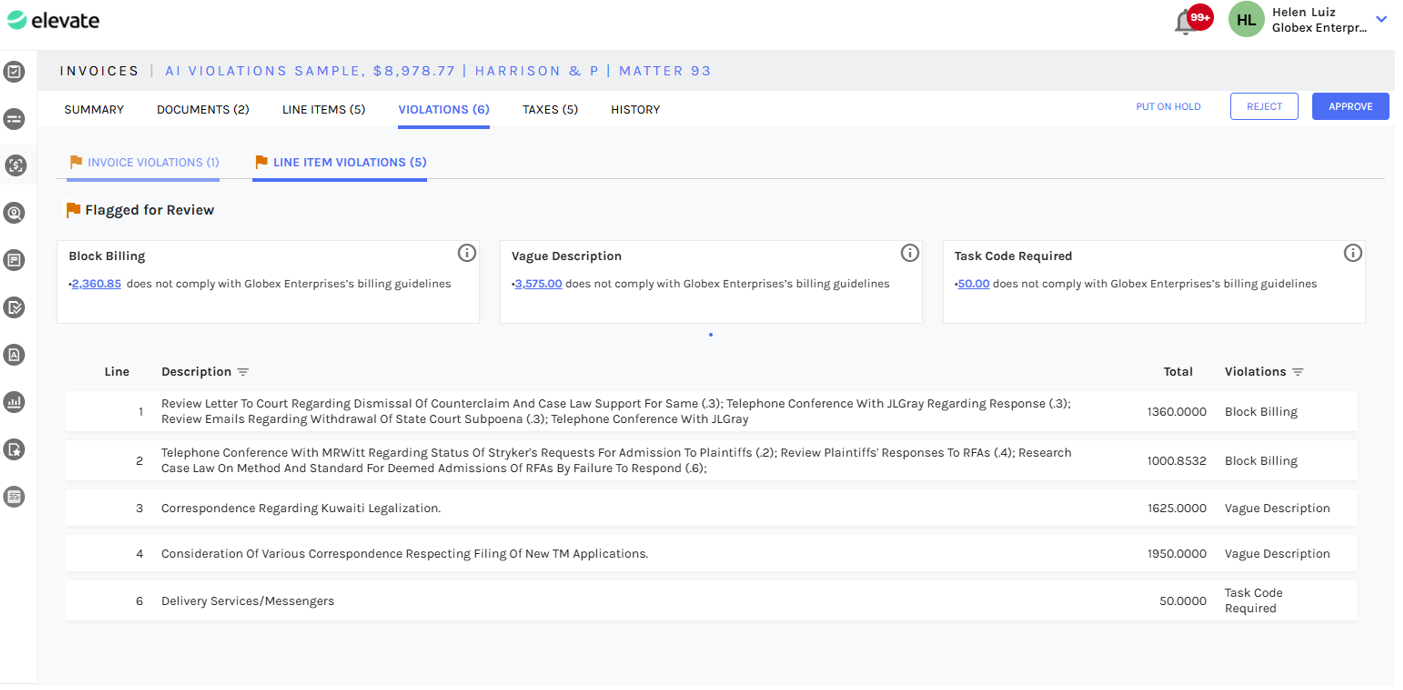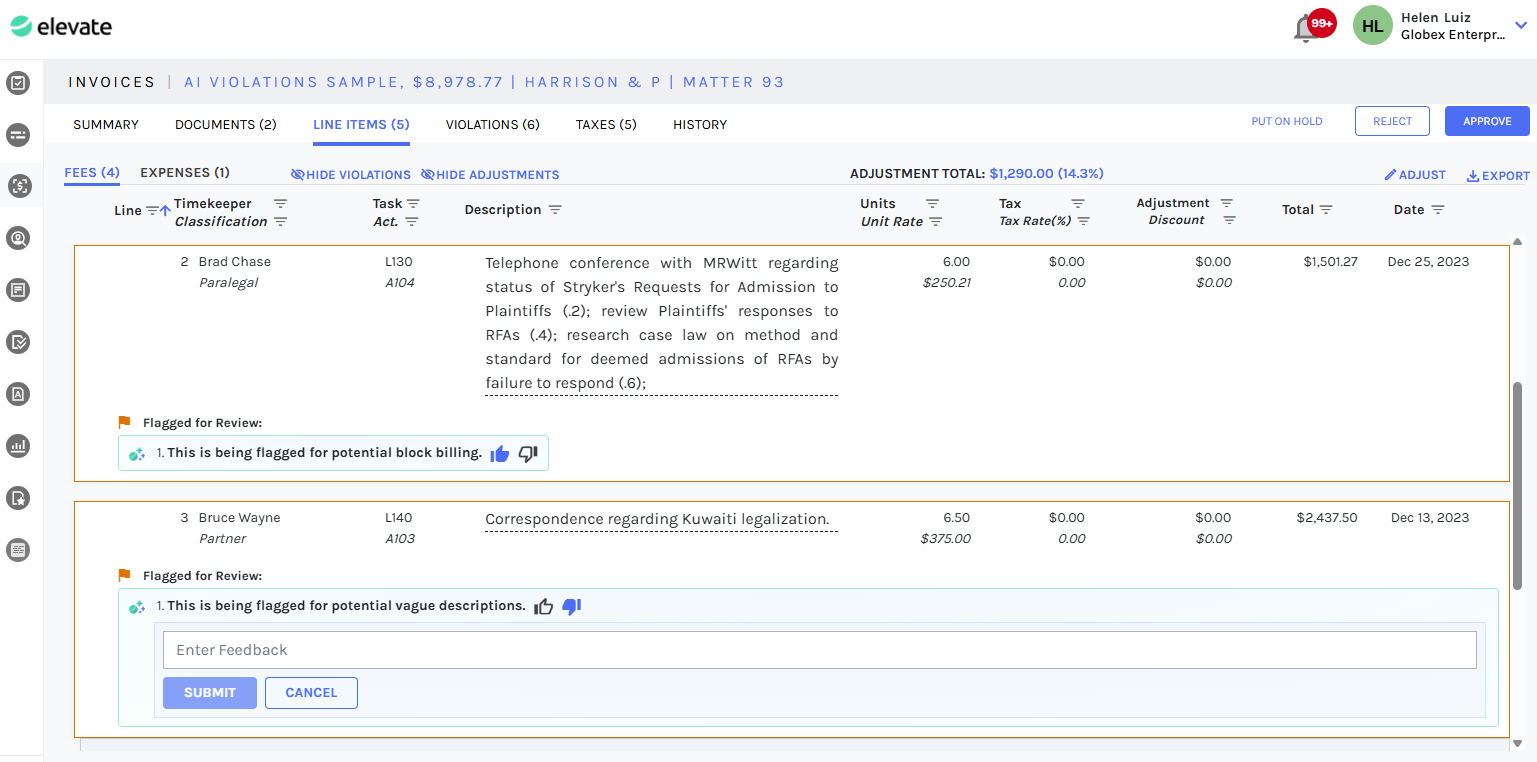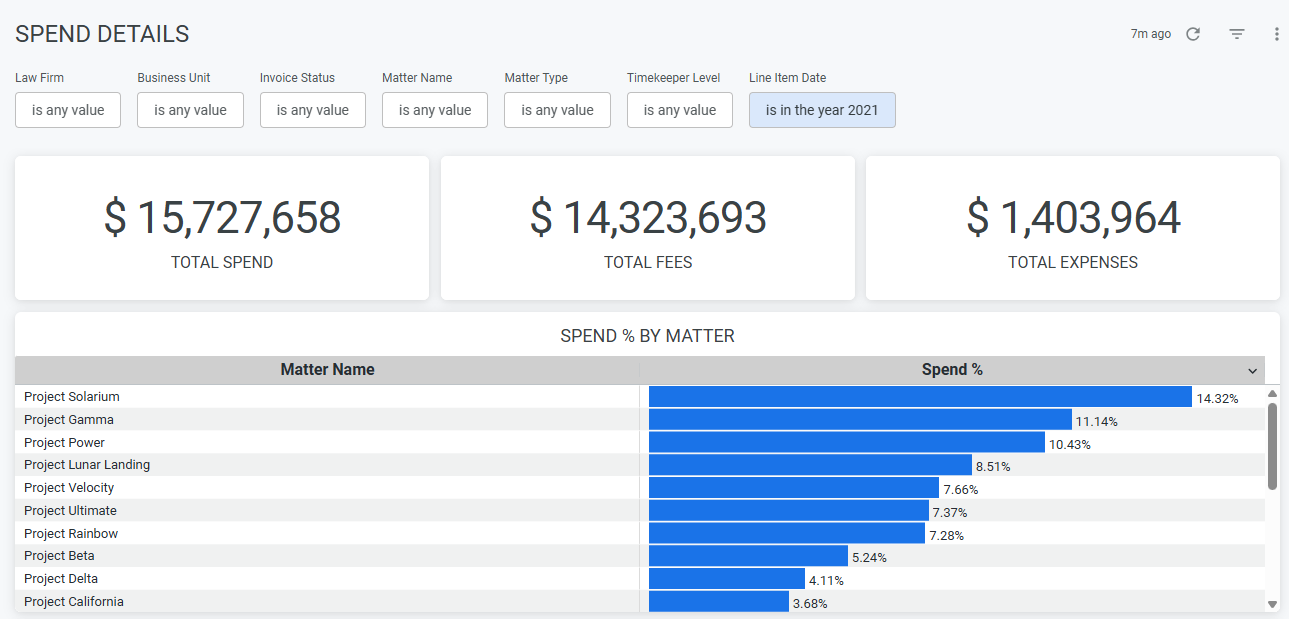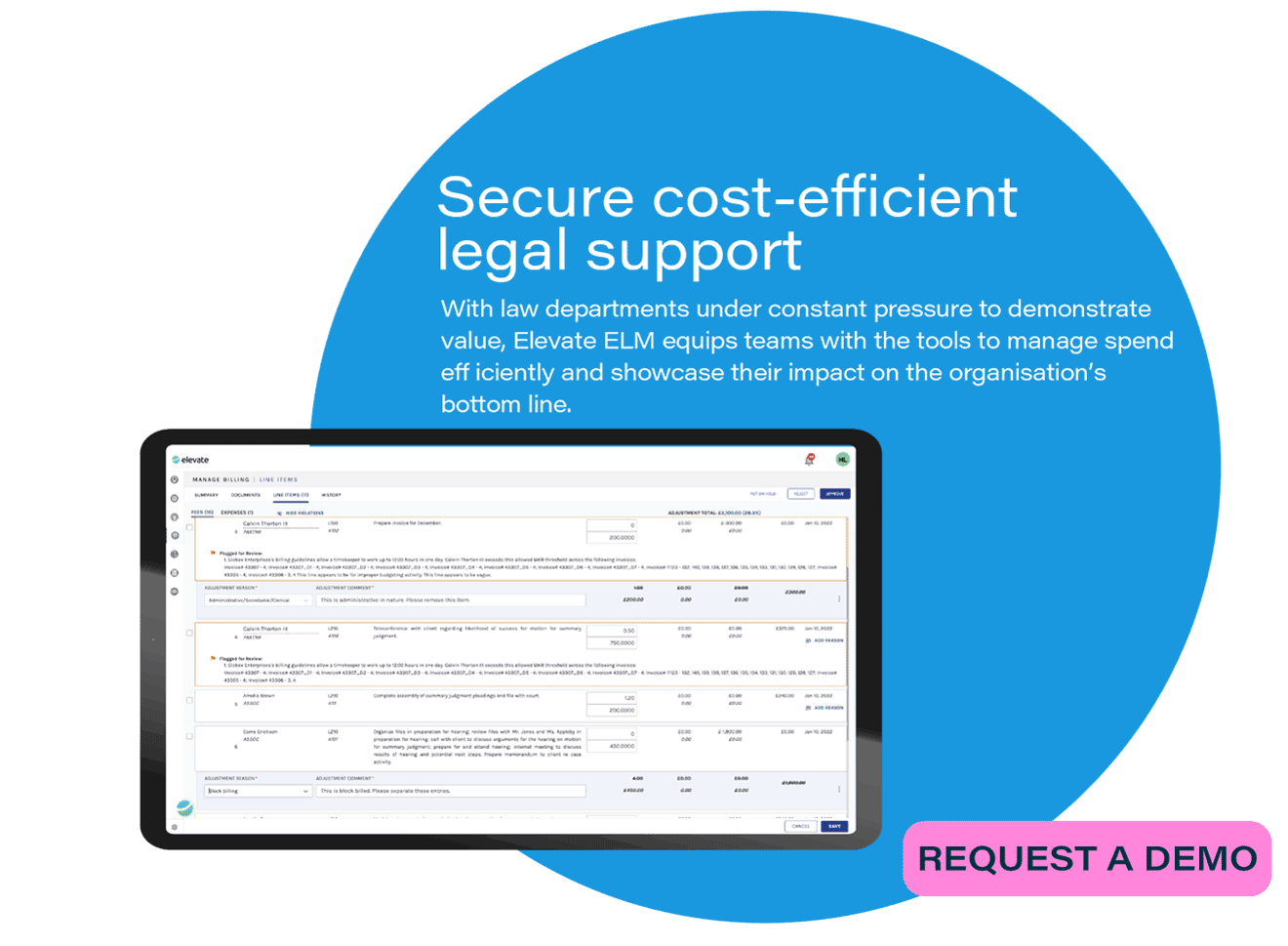Transforming Legal Spend with AI: Top 5 Priorities for the Law Department
October 15, 2025
best practices elm legal operations cost savings
Over the past six months, we’ve had many conversations with customers, prospects, and legal tech users across various law departments. A clear theme has emerged: growing interest and demand for AI-enabled billing and spend tools. This budget and planning season, teams are no longer just looking for tools to process invoices — they want platforms that can automate, analyse, and advise, and see AI as a true game-changer.
Here are the top 5 priorities we’re seeing for law departments when thinking about spend and billing in Q4 and beyond, into 2026:
Priority #1 – Automating Invoice Review with AI
AI helps by scanning every line item, comparing it to outside counsel guidelines (OCGs), and detecting patterns that indicate errors or inconsistencies. Unlike rule-based systems, AI can spot subtle anomalies, such as repeated staffing discrepancies across multiple matters, or vague descriptions that humans might miss.

This allows law departments to focus human judgment on high-priority exceptions, while maintaining flexibility to adjust OCGs as business processes evolve.
Priority #2 – Gaining Real-Time Spend Visibility
‘By the time I get a report, the budget is already blown.’ Does this sound familiar?
AI-powered reports can help to avoid this scenario by analysing historical billing data to detect trends, forecast potential overruns, and flag unusual patterns. Interactive dashboards can also let legal teams uncover cost-saving opportunities, make faster decisions, and address issues before they affect the budget. Alerts and pre-set triggers ensure critical insights reach decision-makers in real time, not after the fact.

‘Outside counsel spend is the #1 metric tracked by legal ops.’
(Legal Ops and Tech Survey 2024 by Bloomberg Law)
Priority #3 – Strengthening Outside Counsel Collaboration
Many of the firms we speak to say that they struggle with unclear billing rules or opaque rejection processes, which can create friction with their corporate clients.
AI provides transparency by explaining why invoices are flagged and suggesting next steps for resolution, reducing back-and-forth. When combined with communication channels for fast resolution, AI ensures that both internal teams and outside counsel have clear, actionable information which accelerates billing cycles and fosters trust.

‘83% of departments outsource work but are demanding more transparency and control.’
(Legal Ops and Tech Survey 2024 by Bloomberg Law)
Priority #4 – Enforcing Compliance and Reducing Risk
Billing compliance goes beyond catching duplicate charges. Missed appeal deadlines, non-compliant timekeepers, or late submissions can lead to wasted spend and strained internal relations.
Law departments need tools that enforce compliance upfront rather than flagging problems after they happen. Modern eBilling platforms embed risk management throughout, enforcing OCGs in line with regulatory and compliance requirements. Configurable alerts and deadline tracking then provide the guardrails to protect the organisation from costly mistakes.

‘The next few years will be pivotal in defining how law departments embrace innovation while preserving professional standards and trust.’
General Counsel Legal Tech Pulse 2025 Report by Thomson Reuters
Priority #5 – Harnessing the Holistic ELM
For law departments, the use of billing data has transcended day-to-day operations and is now becoming a strategic asset providing insights to the business. By connecting spend and matter data, dashboards can:
- Spot cost-saving trends across vendors
- Benchmark rates and staffing models
- Forecast spend accurately
- Identify risks early
With a fully connected Enterprise Legal Management system, legal teams can answer some of the business’s key questions: Are we getting value from our outside counsel? Are resources allocated to the right matters? Are there hidden savings to be made, and if so, where?

‘An enormous number of GCs — 96% — said they expect ‘AI will meaningfully reduce costs within their legal department.’
2025 In-House Legal Budgeting Report referenced in an article by Legal Dive
Conclusion: Moving from Reactive to Strategic
Law departments are done with clunky, manual billing processes. Basic eBilling tools are no longer enough. Now, legal teams expect automation, transparency, and the built-in intelligence to drive better business outcomes. Elevate ELM helps law departments move from reactive invoice review to strategic spend management.
Elevate’s ELM Software for Legal Spend



